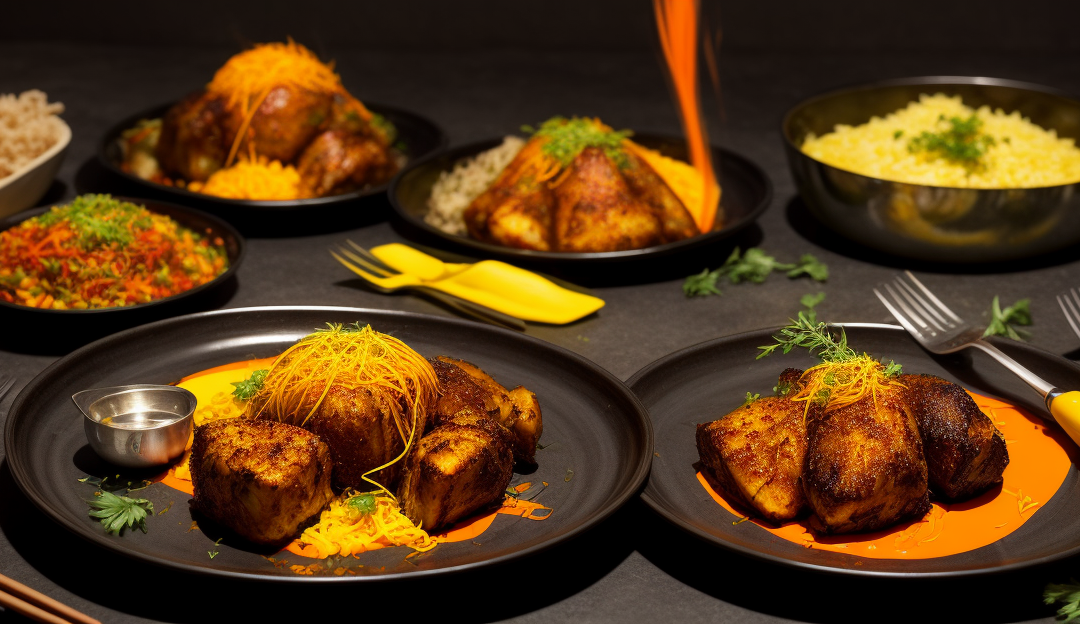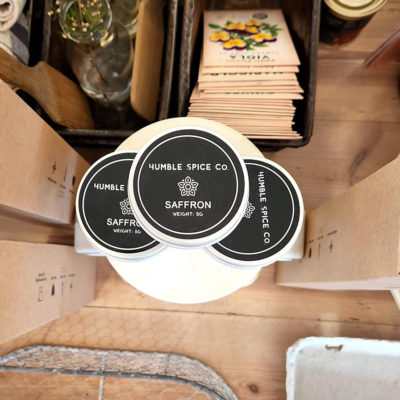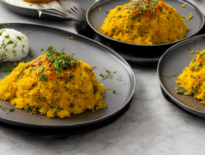You’re about to dive into the vibrant world of saffron! Ever wondered how to maximize its unique flavor in your dishes? Or, maybe you’re curious about storing it properly? We’ve got you covered!
In this guide, you’ll discover seven handy hacks to unleash saffron’s potential in your home cooking. Whether it’s savory dishes or sweet delights, you’re set to impress your guests with your newfound saffron mastery.
So, let’s get started, shall we?
Understanding the Unique Flavor Profile of Saffron
You’ve got to understand the unique flavor profile of saffron to truly unlock its culinary potential. Saffron, the world’s most expensive spice, is revered for its distinctive taste. It’s an intriguing blend of sweet and bitter, with a complex flavor that’s often described as floral, honey-like, and slightly metallic.
This isn’t a spice you can simply toss into a dish and expect magic. You’ve got to be intentional. Its potency means you’ll only need a pinch, but don’t let that fool you. Saffron’s impact is huge. It can elevate a dish from mundane to exceptional. So, don’t be shy about experimenting with it.
Understanding and respecting saffron’s unique flavor profile is the first step to becoming a master in the kitchen.
Essential Tips for Storing and Preserving Saffron
Now, let’s delve into vital tips you’ll need for storing and preserving saffron to maintain its potent flavor and rich color.
First off, keep it in an airtight container. Saffron’s volatile compounds are sensitive to air and light, so darkness and airtightness will help it stay fresh. Place the container in a cool, dry, and dark place. Avoid the fridge, as it’s too moist.
Don’t buy ground saffron; it spoils more quickly. Instead, opt for saffron threads. Only grind what you need at the moment.
Lastly, don’t store it too long. Saffron’s flavor starts to fade after two years. So, use it while it’s fresh and vibrant.
Techniques for Properly Infusing Saffron Into Your Dishes
When it comes to flavoring your dishes, you’ll find that saffron, with its unique aroma and vibrant color, can be a bit tricky to infuse but with the right techniques, you’ll master it in no time.
The key is to release the flavor slowly. You can crush a pinch of saffron strands using a mortar and pestle, and then steep it in hot (not boiling) liquid for at least 15 minutes. This liquid can then be added to your dish.
Alternatively, you can toast the strands gently over low heat before crushing. Remember, a little goes a long way. So, it’s better to start with less and add more if needed.
Don’t rush the process, take your time to let the saffron infuse properly.
Exploring Saffron’s Versatility in Savory Recipes
Although you might traditionally associate saffron with sweet dishes, you’ll discover that it’s incredibly versatile when incorporated into savory recipes. You’ll find it adds a unique flavor and richness to your dishes.
Try adding a pinch to a pot of simmering broth for a risotto or soup. It’ll impart a lovely golden hue and an exquisite taste.
It’s also fantastic in meat dishes. When you’re preparing a marinade for chicken or lamb, add a few strands of saffron. You’ll be amazed by the flavor enhancement.
Even in vegetable dishes, it works wonders. A dash in your stir-fry or casserole can elevate the taste to a gourmet level.
Sweet Delights: Using Saffron in Desserts
Where in savory dishes you’ve found saffron to be a delight, have you ever considered its transformative power in desserts? This exotic spice can add a unique, luxurious touch to your sweet treats.
Imagine a saffron-infused custard, its delicate flavor enhanced by the spice’s distinctive notes.
How about sprinkling some in your apple pie mix? It’ll bring an unexpected depth and a beautiful golden hue to your classic dessert.
Or steep saffron strands in warm milk to create a rich base for your homemade ice cream. You’ll find the result quite captivating.
From cookies to cakes, saffron can elevate the ordinary to the extraordinary.
Unconventional Uses of Saffron in Home Cooking
You’re about to discover saffron’s flavor-boosting potential in some unconventional home-cooking applications.
Ever thought of infusing this fragrant spice into your drinks? Try adding a few strands of saffron into a pot of tea or a glass of lemonade. You’ll be startled by the depth of flavor it imparts.
If you’re feeling adventurous, spice up your popcorn game by melting butter with a pinch of saffron. The popcorn absorbs the rich, aromatic flavors, creating an exquisite snack.
You could even experiment with saffron in your homemade pasta dough, resulting in a vibrant, flavorful dish that’s sure to impress.
Forget limiting saffron to just paellas and biryanis. Unleash your creativity and let this yellow gold transform your everyday dishes into culinary masterpieces.
Troubleshooting Common Issues When Cooking With Saffron
Let’s tackle the common problems that can ruin your dish’s flavor when you’re cooking with saffron.
First, you may add too much saffron, overpowering other flavors. Stick to recommended amounts; a little goes a long way.
Second, avoid using saffron threads directly. Instead, steep them in warm water, stock, or wine to extract the flavor. This will also help distribute it evenly in your dish.
Third, never use powdered saffron. It’s often adulterated and loses flavor quickly.
Lastly, store saffron properly. Keep it in a cool, dark place in an airtight container. Exposure to light, heat, and air can degrade its quality.
With these tips, you’ll avoid common saffron pitfalls and enhance your dishes beautifully.
Saffron isn’t just a fancy spice, it’s a versatile ingredient that can upgrade your dishes, both sweet and savory.
With the right storage, proper infusion techniques, and a dash of creativity, you’ll master the art of cooking with saffron.
Don’t be afraid to experiment and troubleshoot. Remember, every great chef started somewhere.
Now, it’s your turn to spice up your kitchen adventures with saffron.
Happy cooking!






